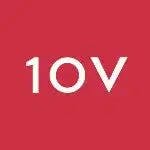How we create an OKR Strategy Map to Align your Organisation
OKRs are a great method of communicating strategy throughout an organisation. This is the process we use for incorporating strategic alignment into the creation of purposeful OKRs.
4 June 2023

What is an OKR Strategy Map?
If you’re reading this insight, chances are you will already have a fairly good idea of what strategy mapping is and what it’s used for in an organisational context.
But to cover all bases, strategy mapping is a way of visualising the cause-and-effect connection between a business’ strategic objectives.
Admittedly, we are not the first to use strategy mapping as a way of creating an OKR strategy map, however, we have had great success combining strategy mapping with a few other theoretical components in order to align organisations, using OKRs as the catalyst for operational efficiency.
An OKR strategy map works under the same principles as traditional strategy mapping, whereby the business’ strategic objectives are visualised through four lenses;
- Financial
- Customer
- Internal Process
- Organisational Capacity (Learning & Growth)
Once we have our strategic objectives mapped out, forming the roadmap for how we get from where we are to where we want to be, we then need to derive some metrics that will enable us to track progress towards achieving our objectives.
How do we create an OKR Strategy Map?
Strategy Mapping
We start creating our OKR strategy map by conducting a series of interviews with an organisation’s leadership team, in order to understand the company strategy and gather a shared visual representation of what the strategy is.
These objectives are, as previously mentioned, categorised into four different perspectives (financial, customer, internal process and organisational capacity), so that we develop a holistic view of the company strategy, as opposed to being from just a singular viewpoint.
Generally speaking, a traditional strategy map works from bottom-to-top, so what you want to change with your people (organisational capacity) has an effect on how you work operationally (internal processes), which consequently impacts the customer and their impression of the company, resulting in positive implications from a financial perspective.
We build out the strategy map by asking ‘what are the blockers to achieving your vision?’ and then ‘what needs to be done to overcome those blockers?’.
Additionally we can work up the strategy map by asking ‘once the strategic objective has been achieved, what change will you see from the perspectives above’ i.e. customer viewpoint, financial viewpoint.
 Strategy Map example | 1ovmany
Strategy Map example | 1ovmany
Customer Performance Indicators
So, we now have the strategic objectives mapped out, what we then need are a set of metrics that we can attach to these objectives, in order to track our progress against them,
These metrics are acquired through Customer Performance Indicators, which are made up of a set of customer-centric desired outcomes, evaluated on the basis of how well the company fulfils the desired outcomes (Fitness for Purpose).
Against the Customer Performance Indicators, we attach a criteria for establishing where the company’s current measure of quality lies in relation to the minimum industry performance threshold and what’s deemed to be exceptional industry performance threshold.
We can use the findings from this process to identify areas of concern where the company is not meeting minimum industry performance threshold and/or areas where we want to be pushing to meet exceptional industry performance threshold.
OKR Strategy Map: OKR planning
Once we have our strategy map and have established our Customer Performance Indicators with a clear idea of the areas that need improvement, we can then plan out our OKRs.
First, we want to look at our strategy map and ask ‘what are the key things to do in the next year?’.
Next, we’ll look at our metrics from the Customer Performance Indicators, and ask ‘which are the ones where we are not meeting the minimum industry performance threshold?’.
Finally, we use the metrics from the Customer Performance Indicators again, to assess ‘where are the ones where we want to be closing in on the exceptional industry performance threshold?’.
These are the questions we ask in order to form the basis of our OKR strategy map, with the answers providing the inputs to the company’s OKRs.
We should now have a visualisation of what the organisation collectively wants to prioritise changing over the next 12 months and can use this to craft our Objectives and Key Results.
Align your Organisation with an OKR strategy map
Using the information gathered from creating our OKR strategy map, we then use a version of the 1ovmany OKR Canvas – tailored to a company-focused viewpoint, as opposed to a team-focused viewpoint – to structure the OKR creation.
Through adopting a combined approach of strategy mapping, as defined by the Balanced Scorecard methodology, and applying Fitness for Purpose principles to acquire our Customer Performance Indicators evaluation, we have a process that not only communicates how value is created by the organisation, but also a criteria for establishing to what extent the company’s metrics are meeting customers’ requirements, desires or needs.
If our OKRs can then be crafted to accurately represent the change a company wants to make in order to move closer to its vision and mission statement, we can effectively communicate strategy through the organisation.
 Strategy Management with OKRs | 1ovmany
Strategy Management with OKRs | 1ovmany
Once we have a way of communicating strategy through the business, we can in-turn expect the work being done on all levels of the organisation to be carried out in alignment to the company strategy.
It’s become apparent to us that many of the organisations we speak with not only don’t have a shared view of what their strategy is, but struggle to communicate strategy throughout the business in a manner that’s clear and coherent to all its stakeholders.
An OKR strategy map is a great way to align your organisation behind your strategy, but to create purposeful Objectives and Key Results requires expertise in the form of experienced OKR practitioners.
Book a consultation with us today, and discover how we can help you start using OKRs and develop your OKR strategy map, to get the best out of your people and processes.

About the author
1ovmany Communications Team
We help organisations reach their full potential through continuous and sustainable transformation in customer delivery and product excellence





















